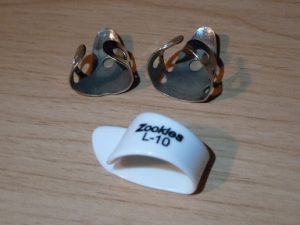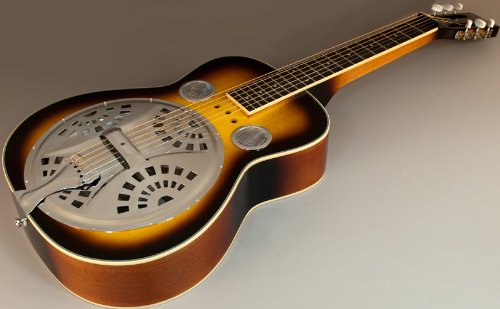
Should you use finger picks or bare fingers on a weissenborn?
If you were to ask me this question for the dobro, i would not hesitate much and would probably suggest to start off with finger picks, the main reason being you need a strong percussive attack on the strings (especially for the bluegrass stuff) which is harder to get with bare fingers.
For a weissenborn, my answer would be: “it depends” 😉
Let’s first try to consider a few reasons you would prefer one over the other.
Some reasons you would consider playing with finger picks:
– If you’re already used to playing with finger picks and have a good technique, you can keep using them on your weissenborn.
– If you want to play at jams or in a band, you’d probably be better off getting used to finger picks first otherwise it will be much harder to get your instrument to cut through other instruments.
Some reasons you would consider playing with bare fingers:
– If you’re already used to playing the acoustic guitar with bare fingers and get a good sound with them, you can probably start playing the weissenborn with bare fingers as well.
– If you want to play soft melodic or intimate solo pieces of music, playing with bare fingers can definitely make it easier to achieve this type of atmosphere.
Another thing that can help you decide is to to make a list of pros and cons of each technique.
Here are a few pros and cons of using finger picks:
Pros:
– Crisper sound,
– More articulate (better note separation),
– More volume,
– More attack.
Cons:
– Feels awkward at first, harder to get used to,
– More string noise (“clicky” sound when strings and picks get in contact).
Here are a few pros and cons of using bare fingers:
Pros:
– Warmer sound,
– Softer, more intimate or quiet effect,
– Feels natural.
Cons:
– Less consistent sound (harder to get a good note separation),
– Harder to cut through in a band or jam situation.
There is also one alternative to picks and bare fingers: nails.
For some people, this is the best of both worlds since you get a similar sound to picks without needing to learn how to play with picks (although you won’t probably get the same volume).
But you need strong fingernails so If your nails are weak and break easily, your best option is to try fake acrylic nails.
The cool thing about fake nails is that they feel natural and won’t break as much as your real fingernails.
The downside is they need regular care so be prepared to spend a little cash at the nail salon every few weeks 😉
Another alternative you might want to try is the alaska picks. Those are picks you place under your fingernails and they’re supposed to feel like natural nails.
So as you can see, there are several options and hopefully those tips will help you decide over what you should use.
If you still can’t decide over what you should use (picks, bare fingers, fake nails..) then i would suggest starting off with finger picks.
Why?
Because i think it’s generally easier to start off with finger picks and THEN trying out with bare fingers rather than the opposite.
When i first tried out finger picks, they felt really awkward.
But guess what? after a while, they started to feel more and more natural and now i could not even imagine playing without anymore!
So if you decide to try out finger picks then stay determined and stick at it for at least a few weeks. That’s when you’ll start to reap the benefits of perseverance 🙂
In the end, whatever technique you choose, it will be like everything else, it just needs time and dedication!
Good luck!
Related video lesson: How to wear a thumbpick and fingerpicks?
